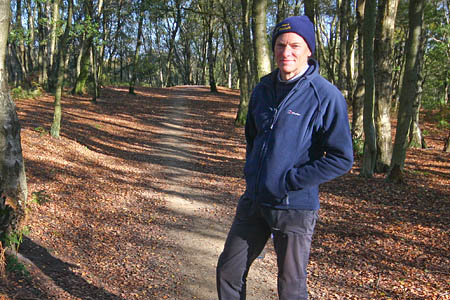He was the man who popularised the concept of relativity in hillwalking and introduced the marilyn to munros.
Alan Dawson figured it wasn’t just the height of a mountain that mattered, but the drop between it and the next – as that was the amount of footslogging needed to summit the hill.
His book The Relative Hills of Britain listed more than 2,000 marilyns – a hill with a prominence of at least 150m, a bagger’s dream, though as Dawson pointed out, it would take a very determined box ticker to complete the whole list. At one per week, it would take more than 38 years to complete them all.
Dawson also helped list the Hewitts: hills in England, Wales and Ireland over two thousand feet – again with a drop, this time of just 30m.
Mr Dawson has also suggested metric versions of the munro list, replacing the somewhat arbitrary height of 914.4m – or 3,000ft in old money – with the more système international-friendly 900m.
But, having exhausted the list possibilities for baggers above ground, Dawson turned his attention to the relatively unknown potential underneath walkers’ feet. His new project, revealed today, is The Relative Holes of Britain.
He said: “Some people get a bit jaded with climbing hills, and we were looking for some type of radical new challenge that still gets you out into the countryside.
“I started looking at maps again. There were several years when I couldn’t face it; I was physically sick if I looked at a map, because I’d spent so much of my life looking at them.
“But then I had some counselling sessions and they involved aversion therapy so the map got closer and closer to me, so I finally got to the stage where I was able to look at a map again.
“But it was with new eyes; so instead of focusing on hills, I started looking at the inverse of hills, which of course, is holes in the ground.”
He is currently working on the project, working out how many there are and the criteria for inclusion.
His search began, appropriately, at Mad Allen’s Hole on Bickerton Hill in Cheshire and amateur hill sleuth Myrddyn Phillips interviewed him about the Relative Holes at the site, near Raw Head.
In it, he explains the difficulty of deciding what counts as a bagging of holes: do you just walk round, peer in, or do you have to touch the bottom for it to count. There is even, says Dawson, an Inaccessible Hole to match the munrobaggers’ Inaccessible Pinnacle on the Skye Cuillin.
Many of the holes in question are not surveyed, so various techniques are being tested to determine their depth, such as throwing down a rock attached to a piece of string; sending down dogs, and sending down children.
It is, says, Mr Dawson, a major task.
He is also looking for a name for the relative holes, to match the marilyn sobriquet applied to his hills list.
Meanwhile, suggestions for the list include Boggart’s Roaring Holes on the southern slopes of Ingleborough, the Hole of Horcum in the North York Moors, and South Hole near the Devon coast.
There is even a hamlet called Hole near the Bronte village of Haworth in West Yorkshire.
The list is still work in progress, but he hopes to put the Relative Holes into print soon. “I’ve got a few publishers interested but I’m keeping the details to myself,” Dawson added.

Ted Allwood
01 April 2011Hole-bagging will be quite a challenge; I understand that there
are 4000 holes in Blackburn, Lancashire alone.
Regards
Ted
JohnO
01 April 2011Ho Ho Ho!
interfaceimages
01 April 2011There is a depression in a field near here that occasionally fills with water and is known by the locals as the Frail Pool - is this a candidate?
MArgaret Squires
01 April 2011I've started already. Went down into my cellar. Can I get a certificate as first bagger?
Myrddyn Phillips
01 April 2011I'm sure depressions filled with water do not count. However, cellar bagging is an interesting concept, one that may be included in the final list!
rhodesy
01 April 2011"It is, says, Mr Dawson, a major task." I got to there before I realised - oh dear!
Eryl Selly
02 April 2011You could call them Polos!